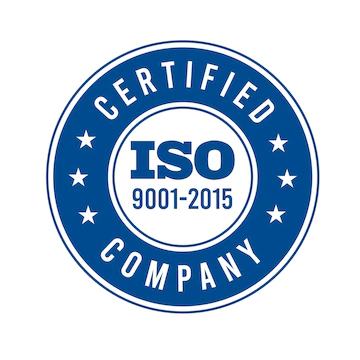ISO 45001:2018 OH&SMS
Occupational health and safety is a multidisciplinary field concerned with the safety, health,
and welfare of people at work. The goals of occupational safety and health programs include to
foster a safe and healthy work environment. The main focus in occupational health is on three
different objectives: (i) the maintenance and promotion of workers’ health and working capacity;
(ii) the improvement of working environment and work to become conducive to safety and health and
(iii) development of work organizations and working cultures in a direction which supports health
and safety at work and in doing so also promotes a positive social climate and smooth operation
and may enhance productivity of the organization.

Occupational Health & Safety management system
ISO 45001
Health and safety in the workplace are the prime concern of most businesses, still deaths and injuries occur. ISO 45001 helps the minimum standard of practice to protect employees.
The burden of occupational injuries and diseases is significant, both for employers and the wider economy, resulting in losses from early retirements, staff absence and rising insurance premiums.
ISO 45001, Occupational health and safety management systems – Requirements, will help organizations reduce occupational injuries and ill health by providing a framework to improve employee safety, reduce workplace risks and create better, safer working conditions.
ISO 45001 is applicable to all organizations, regardless of size, industry or nature of business.
It is designed to be integrated into an organization’s existing management processes and follows the same high-level structure as other ISO management system standards, such as ISO 9001 (quality management) and ISO 14001 (environmental management).
Benefits :
will help them manage their OH&S risks and improve their OH&S performance by developing and implementing effective policies and objectives. Key potential benefits from use of the standard include:
Reduction of workplace incidents
Reduced absenteeism and staff turnover, leading to increased productivity
Reduced cost of insurance premiums
Creation of a health and safety culture, whereby employees are encouraged to take an active role in their own OH&S
Reinforced leadership commitment to proactively improve OH&S performance • Ability to meet legal and regulatory requirements
Enhanced reputation
Improved staff morale
Certification Procedure
Application for certification from client
Submission of offer by EVCIL
Acceptance of Offer by client and Confirmation of agreement by both client organization and EVCIL.
Conduct of Initial Certification audit – (Stage 1 + Stage 2) / Re-Certification audit.
Issuance of the “Certificate of approval” on successful completion of the initial / Re-certification
Validity of “Certificate of approval” is for three years from the date of decision, subject to conduct of annual Surveillance audits as agreed upon.
Recertification audit process to be completed before the expiry of “Certificate of approval”.
